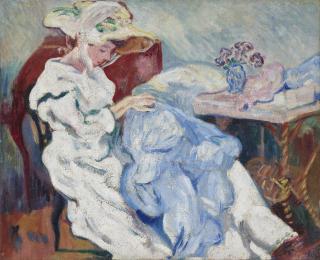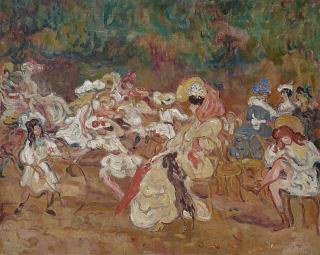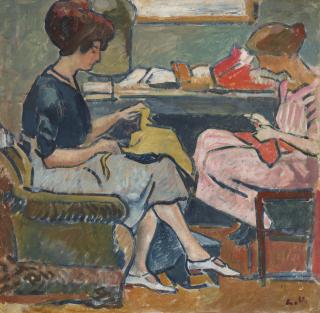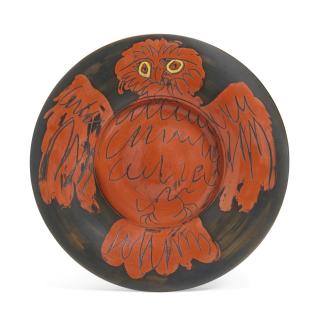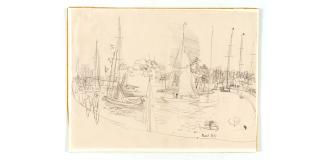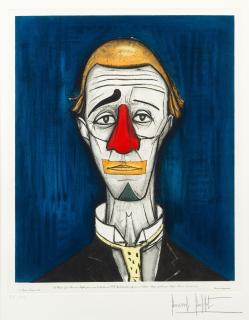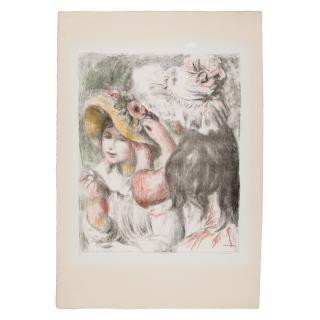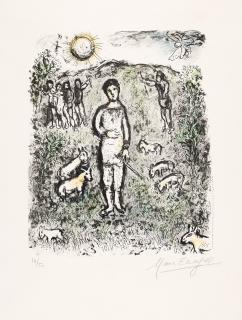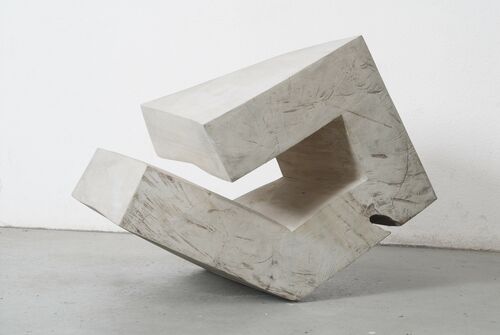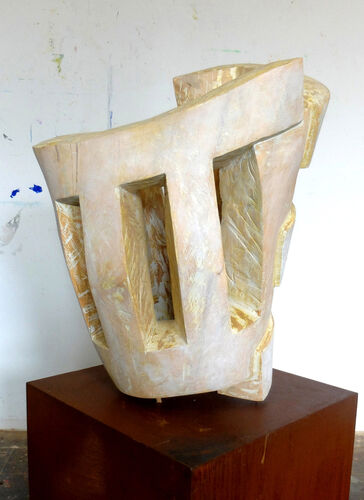Louis Valtat 1869 - 1952
The artist Louis Valtat
- French painter associated with the Fauvist movement.
- Sometimes studied in the studio of Gustave Moreau, a pioneer of »Fauvism«.
- Slipped under the radar of 'Fauvism' like other artists at the Salon d'Automne.
Louis Valtat was a French painter from the Fauvist circle. He was born in Dieppe, Normandy, in 1869 and attended the Académie Julian in Paris from 1888. It was there that Paul Sérusier, a student of Paul Gauguin, taught him the principles of using pure colour. In 1889, he spent some time in the studio of the Symbolist Gustave Moreau, who is said to have had a great influence on Surrealism and Fauvism. Among Valtat's early commissions were the sets for Le Chariot de terre cuite at the Théâtre de l′Oeuvre (1894), which he realised with Henri de Toulouse-Lautrec.
In 1903, Valtat took part in his first exhibition at the Salon d'Automne. At that time, his paintings already showed the first elements of Fauvism, but they did not receive much attention. It was not until 1905 that the decisive group exhibition, retrospectively defined as the first Fauvist exhibition, took place: A small group of artists presented their work in Salle VII of the Salon d'Automne.
The art critic Louis Vauxcelles was piqued by the exhibits of artists such as Matisse and Marquet, whom he compared to »wild beasts« (fauve in French). Valtat was also included in the exhibition and thus exposed to Vauxcelles' judgement - although his style was no more scandalous than it had been two years earlier. In retrospect, therefore, he also belonged to the Fauvist movement.
In 1914, Valtat moved to Paris. A family man, he preferred to paint pictures of his wife and son. He sold many of his paintings to important collectors - he had agreed this in 1900 with the art dealer Ambroise Vollard. In 1948, illness forced Valtat to give up painting - he had lost his eyesight. The Fauvist died in Paris in early 1952 at the age of 82. Today, some of Valtat's works are in the Musée du Petit Palais and the Fondation Oscar Ghez, both in Geneva.
Der Künstler Louis Valtat
- Französischer Maler aus dem Umfeld der Fauvisten.
- Lernte mitunter am Atelier von Gustave Moreau, einem Wegbereiter des Fauvismus.
- Geriert wie andere Künstler im Salon d’Automne unter den Radar des »Fauvismus«.
Louis Valtat war ein französischer Maler aus dem Kreis der Fauvisten. Er wurde 1869 im normannischen Dieppe geboren und besuchte ab 1888 die Académie Julian in Paris. Dort lehrte ihn Paul Sérusier, ein Schüler Paul Gauguins, die Prinzipien vom Einsatz der reinen Farbe. 1889 verbrachte er einige Zeit im Atelier des Symbolisten Gustave Moreau, der großen Einfluss auf den Surrealismus und den Fauvismus gehabt haben soll. Eine von Valtats frühen Auftragsarbeiten umfasste die Bühnenbilder zu Le Chariot de terre cuite am Théâtre de l′Oeuvre (1894), die er gemeinsam mit Henri de Toulouse-Lautrec realisierte.
1903 partizipierte Valtat erstmals an einer Ausstellung im Salon d’Automne. Seine Gemälde zeigten zu diesem Zeitpunkt bereits erste Elemente des Fauvismus, doch schenkte man ihnen noch keine allzu große Aufmerksamkeit. Erst 1905 folgte die entscheidende Gruppenschau, die man retrospektiv als erste Fauvismus-Ausstellung definiert: Eine kleine Gruppe von Künstlern präsentierte ihre Werke im Salle VII im Salon d’Automne.
Der Kunstkritiker Louis Vauxcelles pikierte sich über die Exponate von Kunstschaffenden wie Matisse oder Marquet, indem er sie mit »wilden Bestien« (frz. fauve) verglich. Auch Valtat war Teil der Ausstellung und damit Vauxcelles’ Bewertung ausgesetzt – obgleich sein Stil nicht skandalöser als zwei Jahre zuvor ausfiel. So wird er auch rückblickend den Fauvisten zugeordnet.
1914 zog Valtat nach Paris. Weil er ein familiärer Mensch war, malte er mit Vorliebe Bilder seiner Frau und seines Sohnes. Viele seiner Gemälde übertrug er an große Sammler – er hatte dies 1900 vertraglich mit dem Kunsthändler Ambroise Vollard festgehalten. Eine Erkrankung zwang Valtat 1948 dazu, die Malerei aufzugeben – er hatte sein Augenlicht verloren. Der Fauvist starb Anfang 1952 im Alter von 82 Jahren in Paris. Heute befindet sich ein Teil von Valtats Arbeit im Musée du Petit Palais und in der Stiftung Oscar Ghez, beide in Genf.


